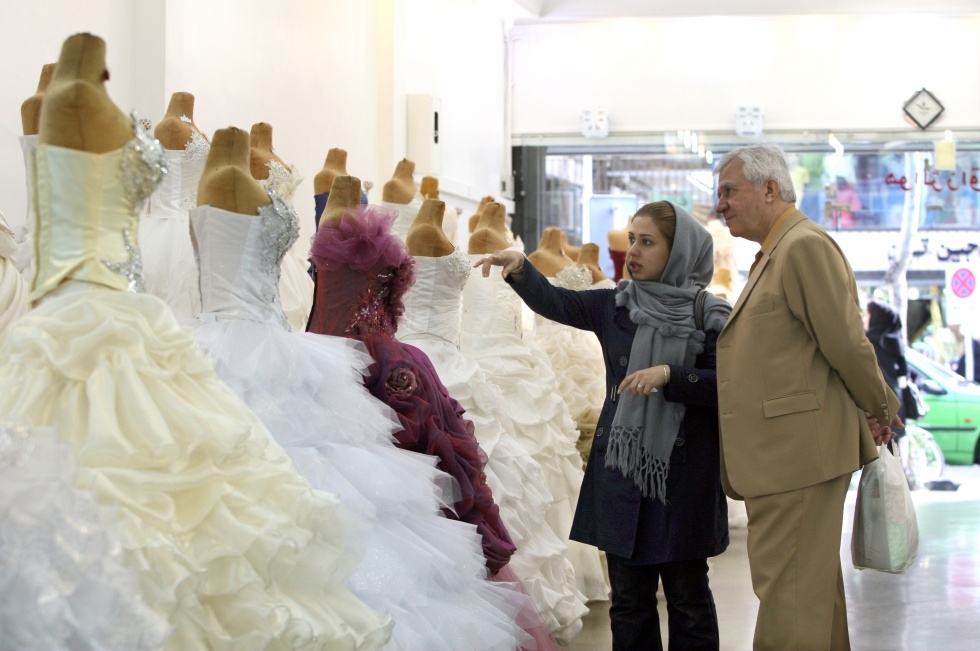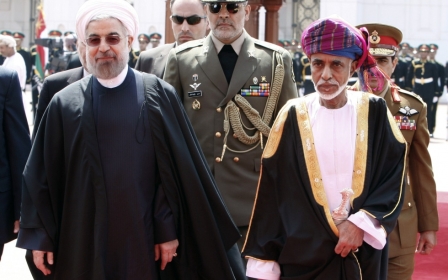Divorce rates rise in Iran, as population growth falls

A new report released on Tuesday shows that divorce is on the rise in Iran - despite a government push for more couples to wed and have children to reverse population growth in decline.
More than one in five marriages in the country ended in divorce last year, an increase of 4.6 percent from the past year, according to an annual report released by the country's Registration Office.
The report comes on the back of statistics showing that Iran’s population growth has dropped to only 1.29 percent in the past 12 months, making it the lowest in the region.
"The rate could fall to zero in the next 30 years," said Mohammad Nazemi Ardakani, an official at the national birth registry.
In light of this, Supreme leader Ayatollah Khamenei has called for the Iranian government to implement measures to increase Iran's population to 150 million from 77 million within 50 years.
"If we move forward like this, we will be a country of elderly people in a not-too-distant future," he told the Fars News Agency in October 2013. "Why do some couples prefer to have one or two children? Why do couples avoid having children? The reasons need to be studied."
Ahmed Toysarkani, head of the Registration Office, blamed the increase in divorce on family interference, proverty, drugs and domestic violence.
Anicee Van Engeland, a lecturer in Iranian law at the Centre for Iranian Studies at SOAS, attributed the trend to worsening prospects for Iran's young people. With fewer options, they are now getting married earlier which has led to marriage instability, she said.
Fifteen years ago, Van Engeland said, more young Iranians could afford to go to university and would study for a degree for four or five years, something they saw as increasing their marriage prospects.
"Now they don’t even bother going to university any more," she said. "They get married around 18, 19 and they get married to the first person who’s coming."
She also attributed part of the problem to the fall in use of nikah mut'ah, a form of temporary marriage used in Shia Islam whereby a couple agree to marry for a set period of time, allowing for legal, short-term relationships in the socially conservative country.
Fewer Iranians are using temporary marriages because the practice has become increasingly stigmitised, Van Engeland said. Equally, the difficult economic situation in the country means many are also unable to pay for the consequences of temporary marriage. For example, she said some women who plan to remarry may want to undergo a hymen reconstruction that costs as much as $2,000.
"That's a lot of money in Iran," Van Engeland said. "So [Iranians] came back to regular marriages and that's why you have a lot of divorce."
The Iranian government has announced a raft of potential measures to combat the falling birth rate, including a ban on vasectomies and a tightening of abortion law. But Van Engeland said the primary cause of Iran's familial woes is the continuing social impact of international sanctions and uncertainty about the future.
She was in the country during the election of President Hassan Rouhani in 2013 and said there was a uplift in the country's atmosphere.
"There was a lot of hope, but careful hope," Van Engeland said. "And not having babies right now falls into that careful hope, like 'We know Rouhani could change things. We're very hopeful. We trust him, but we're also aware that things could go very wrong.' I have a lot of friends who got married recently who don't have babies yet because of that. And also because they cannot afford it."
Middle East Eye propose une couverture et une analyse indépendantes et incomparables du Moyen-Orient, de l’Afrique du Nord et d’autres régions du monde. Pour en savoir plus sur la reprise de ce contenu et les frais qui s’appliquent, veuillez remplir ce formulaire [en anglais]. Pour en savoir plus sur MEE, cliquez ici [en anglais].




